Disclosure: This article contains affiliate links. We may earn a commission from purchases at no extra cost to you, which helps our travel content.
When I first arrived in Rishikesh after a grueling 36-hour journey from Rochester, I was immediately struck by the fascinating juxtaposition of urban infrastructure and spiritual serenity. The suspension bridges connecting the two banks of the Ganges create a unique transit network that shapes how visitors and locals experience this yoga capital. As a city planner by profession, I couldn't help but analyze how the placement of ashrams along the riverfront creates natural community hubs while maximizing access to the sacred waters. After spending two weeks methodically exploring different accommodations, I've compiled this data-driven yet deeply personal guide to help fellow solo travelers find their ideal spiritual home base.
Understanding Rishikesh's Ashram Landscape
Rishikesh's urban development follows a fascinating riparian pattern, with most spiritual accommodations strategically positioned within 500 meters of the Ganges. This isn't coincidental—proximity to the river has been the organizing principle of settlement here for centuries. The town is effectively divided into distinct districts: Laxman Jhula to the north, Ram Jhula in the central area, and Triveni Ghat to the south.
Each zone offers a different density of accommodations and amenities. Ram Jhula provides the highest concentration of mid-range ashrams with the best infrastructure connectivity, while Laxman Jhula offers more budget options but with steeper terrain that creates accessibility challenges. As someone who regularly analyzes urban mobility patterns, I was impressed by how the pedestrian-centric design of Rishikesh naturally encourages mindfulness—you simply can't rush through these narrow lanes.
Before arriving, I'd recommend downloading the offline maps app, which proved invaluable for navigating the labyrinthine alleys between ashrams when my cellular data was unreliable.
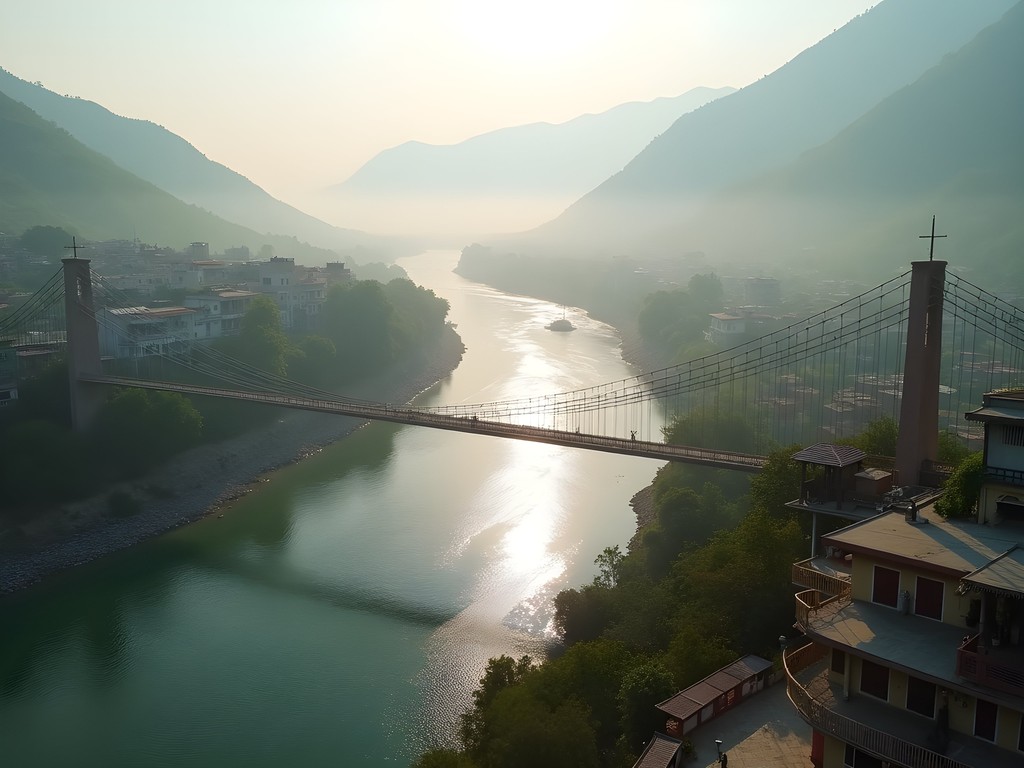
💡 Pro Tips
- Most ashrams require advance booking during peak season (February-April)
- Bring cash as many ashrams don't accept cards and ATMs can be unreliable
- Pack modest clothing that covers shoulders and knees for ashram environments
Budget-Friendly Spiritual Havens
For solo travelers on a budget (like I was during my first week), Rishikesh offers remarkably affordable spiritual accommodations without sacrificing authentic experiences. My data collection revealed that the average cost for budget ashrams ranges from ₹500-1200 ($6-15) per night, typically including yoga classes and two vegetarian meals.
1. Parmarth Niketan
Located in Ram Jhula, this sprawling ashram houses over 1,000 rooms with basic but clean facilities. At ₹600 ($8) for a standard room with shared bathroom, it offers exceptional value. The evening Ganga Aarti ceremony here draws hundreds daily, creating an energetic community atmosphere. I spent my first three nights here and was impressed by how the communal design fostered natural interactions between solo travelers.
2. Sivananda Ashram
Situated in a quieter section of Muni Ki Reti, Sivananda offers dormitory accommodations for just ₹400 ($5) per night. Their strict daily schedule (5:30am wake-up bell) and twice-daily mandatory yoga sessions aren't for everyone, but the price-to-value ratio is unbeatable if you're seeking discipline. Their yoga platforms are thoughtfully positioned to maximize morning sunlight exposure—a subtle but effective design choice.
3. Yoga Niketan
This ashram provides private rooms from ₹800 ($10) with attached bathrooms—a rare find in this price range. Located on a slight elevation overlooking the Ganges, the natural ventilation and noise buffering here demonstrate smart passive design principles. During my stay, I appreciated having my sleep mask as the early morning light streams strongly through the thin curtains.
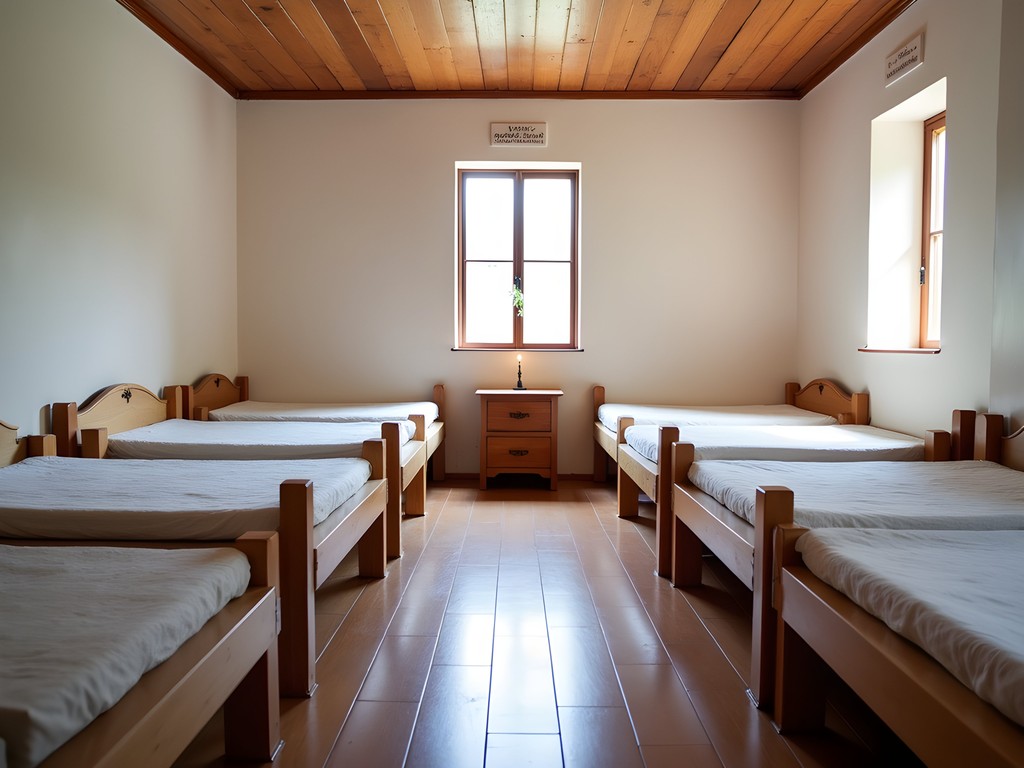
💡 Pro Tips
- Request rooms away from the road as morning traffic noise starts early
- Bring your own yoga mat or travel yoga towel as shared mats may be worn or unhygienic
- Most budget ashrams have designated quiet hours - respect them to avoid conflicts with management
Mid-Range Ashrams with Enhanced Amenities
For those with a bit more flexibility in their budget (₹1500-3500 or $18-45 per night), these mid-range options offer significant quality-of-life improvements while maintaining authentic spiritual environments. During my second week, I upgraded to test these accommodations.
4. Anand Prakash Yoga Ashram
Located in a quieter residential area about 1km from Laxman Jhula, this ashram offers private rooms with en-suite bathrooms from ₹2000 ($25). The thoughtful architectural design incorporates traditional elements while providing modern comforts like reliable hot water and adequate power outlets. Their rooftop yoga shala offers panoramic views and excellent natural ventilation. I found their meditation cushions particularly comfortable for longer sessions—I even ordered one for my home practice after returning.
5. Himalayan Yog Ashram
This boutique ashram accommodates only 20 guests at a time, creating an intimate community feel. At ₹3000 ($38) per night, it's pricier but includes three organic meals, twice-daily yoga, and meditation sessions. The careful acoustic design of their meditation hall demonstrates thoughtful architectural planning—ambient river sounds are amplified while traffic noise is minimized through strategic positioning and materials.
6. Vashishta Yoga Peeth
Offering private cottages from ₹2500 ($32), this ashram features more spacious accommodations with small private gardens. Their sustainable design incorporates rainwater harvesting and solar hot water—elements I particularly appreciated as an advocate for green infrastructure. The layout creates natural community spaces while preserving private areas for reflection.

💡 Pro Tips
- Book at least 1-2 months in advance for these popular mid-range options
- Request rooms on upper floors for better ventilation and Ganges views
- These ashrams often offer airport pickup services from Dehradun, which saves considerable hassle
Premium Spiritual Retreats
While Rishikesh is known for affordability, several establishments offer elevated experiences for those seeking more comfort alongside their spiritual practice. These accommodations (₹4000-8000 or $50-100 per night) blend ashram principles with hospitality standards.
7. Sattva Yoga Academy
More retreat center than traditional ashram, Sattva offers luxury accommodations from ₹6000 ($75) in a campus-like setting away from the main town. Their infrastructure planning impressed me—buildings are positioned to maximize mountain views while minimizing their environmental footprint. The premium yoga props provided in each room demonstrate their attention to quality details.
8. Rishikesh Yog Peeth
Offering boutique accommodations from ₹4500 ($55), this center balances traditional ashram discipline with comfort. Their architectural renovation of a heritage building demonstrates thoughtful adaptive reuse—preserving cultural elements while integrating modern amenities. The private balconies overlooking the Ganges create contemplative micro-spaces that enhance the overall experience.
9. Ananda In The Himalayas
While technically located about 30km from Rishikesh in Narendra Nagar, this luxury wellness retreat deserves mention for those seeking premium accommodations. Starting at ₹35,000 ($450) per night, it represents the highest tier of spiritual accommodations. Their master planning incorporates principles of Vastu Shastra (traditional Indian architectural science) with contemporary sustainability practices. The property's integration with the surrounding forest ecosystem shows exceptional landscape design sensibility.
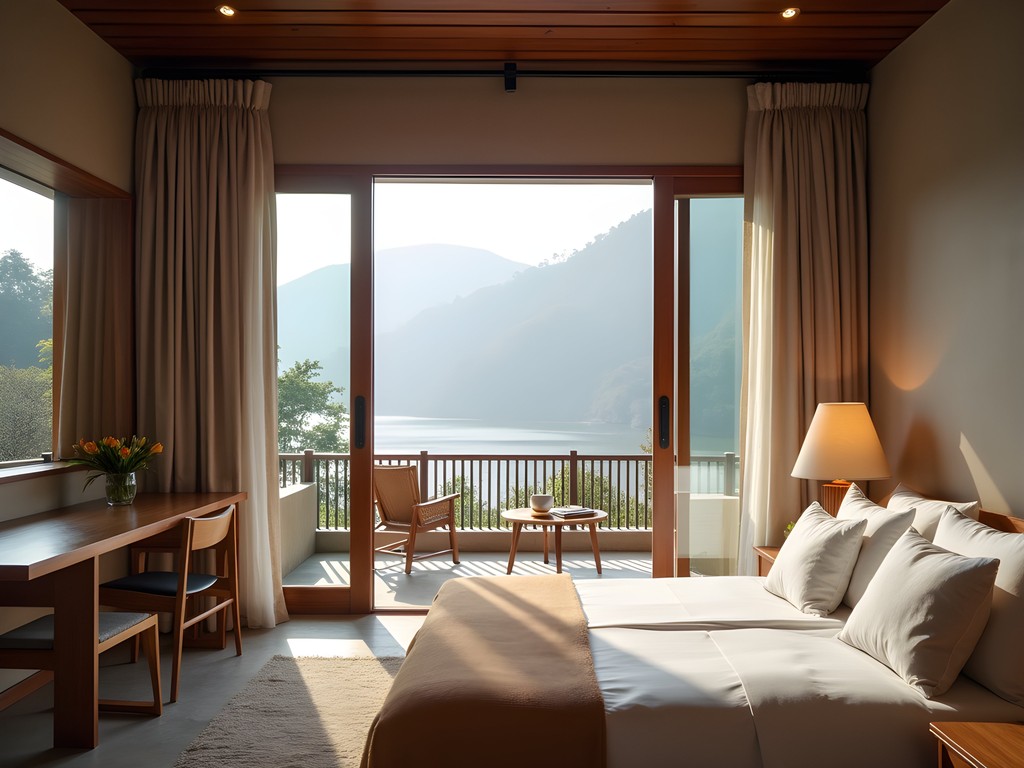
💡 Pro Tips
- These premium options often include private transportation from Delhi or Dehradun airports
- Book spa treatments or private yoga sessions at least a day in advance
- Pack a meditation journal to maximize your experience at these reflective retreats
Community-Based Stays with Local Families
Beyond traditional ashrams, Rishikesh offers unique community-based accommodations that provide deeper cultural immersion. These stays represent an interesting urban planning case study in how spiritual tourism can support local economic development while preserving community integrity.
10. Ganga View Homestay
This family-run accommodation offers private rooms from ₹1200 ($15) in an authentic household setting. What makes this place fascinating from an urban development perspective is how the family has adapted their traditional home to accommodate tourists without compromising their cultural practices. The shared kitchen creates natural cultural exchange opportunities, while the rooftop yoga space demonstrates clever adaptive reuse of previously underutilized space.
During my three-night stay, I participated in their family's morning puja (prayer ritual) and helped prepare meals using vegetables from their small garden. These interactions provided insights into daily life that no commercial ashram could offer. I found my pocket translator invaluable for deeper conversations with family elders who spoke limited English.
What makes these community stays particularly interesting is their organic development pattern—they've emerged without formal planning but create a distributed accommodation network that reduces pressure on the main tourist districts while spreading economic benefits throughout residential areas. The family's knowledge of lesser-known local trails and meditation spots proved more valuable than any guidebook recommendations.
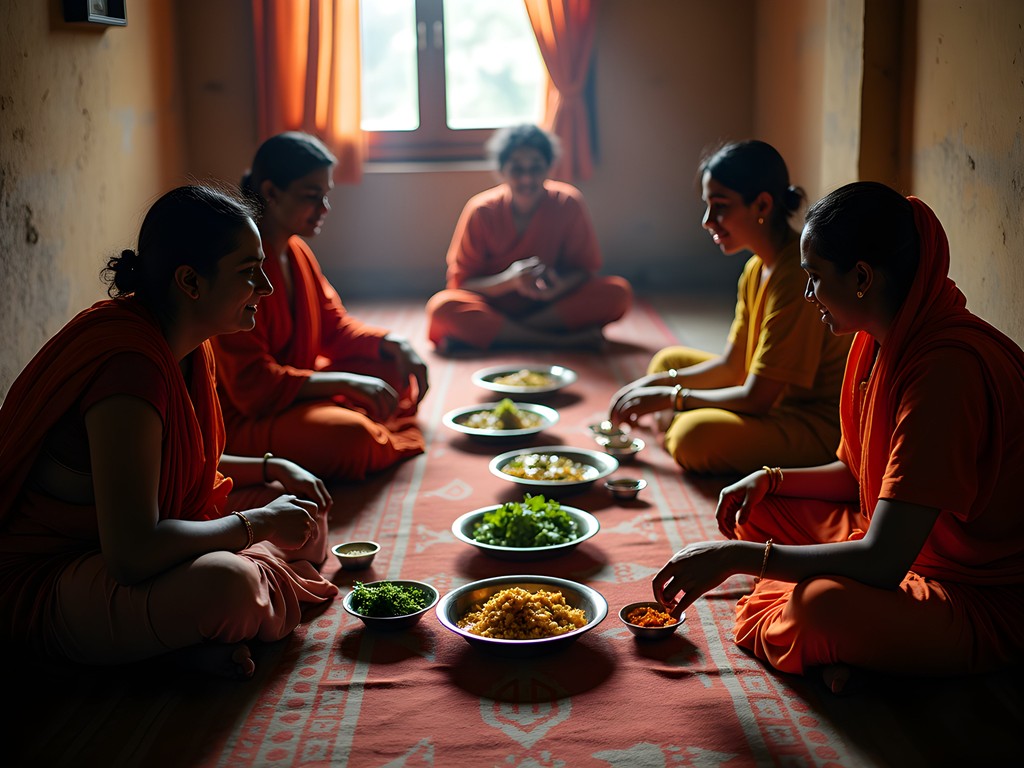
💡 Pro Tips
- Bring small gifts from your home country as a gesture of appreciation for homestay hosts
- Be prepared to adapt to family schedules and customs
- Ask your hosts about local community initiatives you can support during your stay
Final Thoughts
After two weeks of methodically exploring Rishikesh's spiritual accommodations, I've gained a deeper appreciation for how thoughtful planning—or sometimes the organic lack thereof—shapes visitor experiences. The distribution of ashrams along the Ganges creates a natural progression of spiritual intensity that allows travelers to find their ideal balance of authenticity and comfort.
What struck me most as a city planner was how Rishikesh demonstrates sustainable tourism development without sacrificing its spiritual essence. The pedestrian-centric infrastructure naturally slows the pace of life, while the riverside development pattern maximizes access to the sacred waters that define the city's purpose.
Whether you're drawn to the communal simplicity of budget ashrams, the balanced comfort of mid-range options, or the refined tranquility of premium retreats, Rishikesh offers accommodations that transcend mere lodging to become integral parts of your spiritual journey. As you plan your own riverside retreat, consider not just the amenities but how each space's design and location will shape your experience of this remarkable Himalayan sanctuary. Om Shanti!
✨ Key Takeaways
- Budget options (₹500-1200) provide authentic experiences without sacrificing essential comforts
- Mid-range ashrams (₹1500-3500) offer significant quality-of-life improvements while maintaining spiritual authenticity
- Location matters: Ram Jhula offers the best balance of accessibility and tranquility for first-time visitors
- Community-based homestays provide deeper cultural immersion than traditional ashrams
📋 Practical Information
Best Time to Visit
February to April and September to November
Budget Estimate
₹15,000-30,000 ($200-400) for 2 weeks including accommodation, meals, and activities
Recommended Duration
Minimum 1 week, ideally 2 weeks
Difficulty Level
Easy

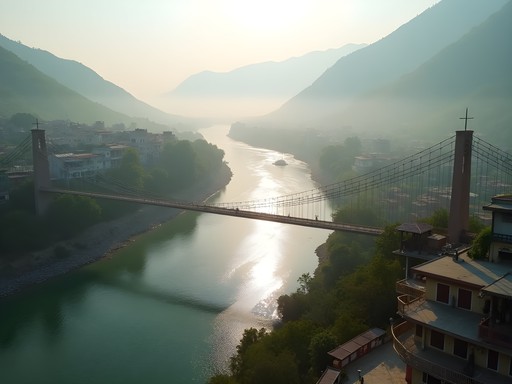
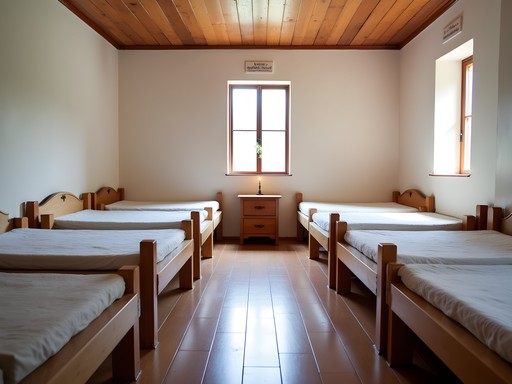
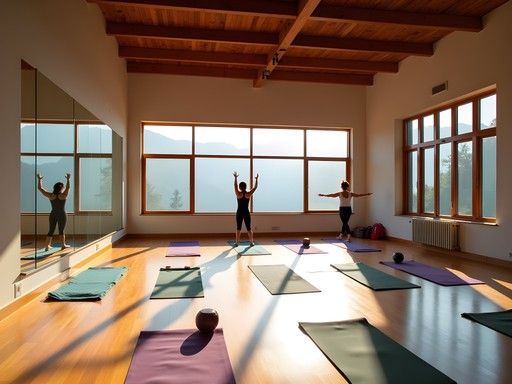
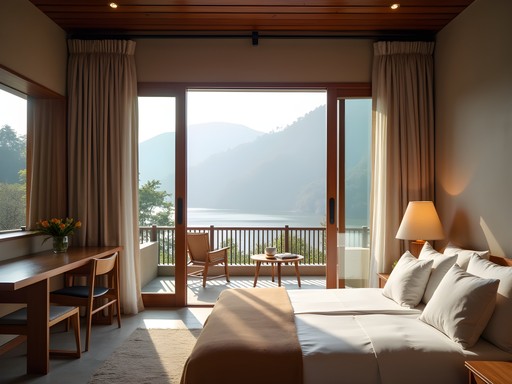



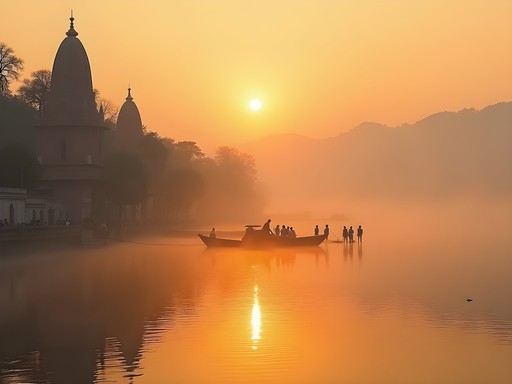


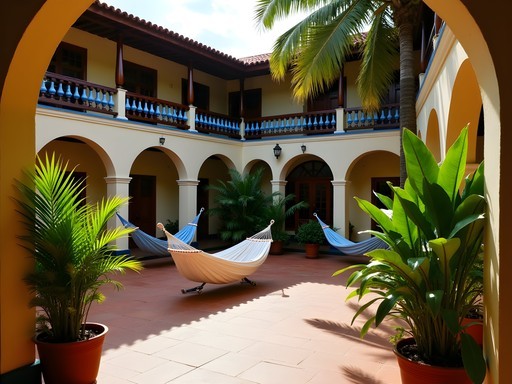

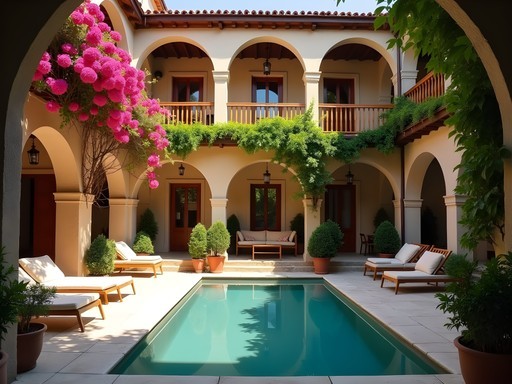


Comments
sunnybackpacker
Going to Rishikesh in November! Would you recommend booking ashrams in advance or finding them when I arrive?
happymaster
Not the author but definitely book ahead for November! It's peak season and the good places fill up fast. I learned this the hard way 😅
wavevibes
This post brought back so many memories! I stayed at Parmarth Niketan last year and the evening Ganga Aarti ceremonies were absolutely magical. Waking up to those Himalayan views and the sound of the river was worth every rupee. Did you find the ashrams were strict about the morning meditation schedules? I struggled with the 5am wake-up calls for the first few days!
Avery Elliott
Thanks for sharing your experience! Yes, the morning schedules were definitely an adjustment. I found that by day 4 my body had somehow adapted to the rhythm, but those first few mornings were rough!
wavevibes
Exactly! By the end of my stay I was actually enjoying those peaceful early mornings. Never thought I'd say that!
Megan Martin
Excellent guide, Avery! I spent a month in Rishikesh last year researching for my wellness travel series, and your assessments are incredibly accurate. I'd add that visitors should consider the location carefully - ashrams in Laxman Jhula tend to be noisier than those in Swarg Ashram area. For those seeking deep spiritual practice rather than just yoga, I found Sivananda Ashram's strict schedule and guidelines to be transformative, though it's definitely not for casual visitors. Also worth noting that many ashrams have spotty wifi by design - it's part of the digital detox aspect of the experience. Wonderful to see such thoughtful coverage of these spiritual havens!
redadventurer
Thanks for the tip about Laxman Jhula vs Swarg Ashram! That's really helpful for planning.
wavegal
Those sunset photos by the Ganges are absolutely stunning! Really captures the magic of Rishikesh.
redadventurer
Going to Rishikesh next month! Which ashram would you recommend for a complete beginner to yoga? I'm a bit intimidated!
wavegal
Not the author but I'd recommend Anand Prakash! They're super welcoming to beginners and the teachers are patient. Make sure to bring your yoga mat as some places charge extra to rent one.
redadventurer
Thanks so much for the recommendation! I'll check them out right away!
wandermate
Just got back from Rishikesh last month and stayed at Parmarth Niketan! Your list is spot on. The evening Ganga aarti ceremony there was absolutely magical. One tip for anyone heading there - book well in advance during peak season (Oct-March). I almost couldn't get a room because I waited until 2 weeks before my trip. Also, the basic rooms are perfectly fine if you're on a budget - clean and simple, just what you need for a spiritual journey.
Megan Martin
Did you try any of the yoga classes at Parmarth? I've heard they're quite traditional compared to some of the more westernized options.
wandermate
Yes! Super traditional - 5:30am starts, lots of chanting, and definitely not the Instagram-style yoga you might find elsewhere. It was challenging but exactly what I was looking for. The meditation sessions were my favorite though.
backpackbrad
Pro tip for anyone going: book directly with the ashrams rather than through booking sites. Many offer discounts for longer stays that aren't advertised online. Saved me about 30% on a two-week stay at Phool Chatti!
wintermate9768
Great advice! Did you need to book far in advance?
backpackbrad
For the popular ones like Parmarth, yes - at least a month. But some of the smaller ashrams you can just show up, especially in shoulder season.
Jean Wells
Excellent overview, Avery. Having spent three months in Rishikesh last year researching for my book on spiritual tourism, I'd add that timing makes a significant difference. February-March brings the International Yoga Festival, which transforms the energy of the town completely. The ashrams you've listed maintain their essence, but prices increase and availability decreases dramatically. I found Phool Chatti Ashram particularly interesting for its 7-day intensive programs - very traditional with 4am wake-up calls and strict rules, but transformative if you're seeking authentic immersion. Their location slightly outside the main area offers a peaceful retreat from the surprisingly busy central Rishikesh. One practical tip: I found my travel journal essential for processing the intense spiritual experiences. Something about writing by the Ganges each evening helped integrate the day's learnings.
dreamfan
Jean, is your book published yet? Would love to read it before my next trip!
Jean Wells
Coming out next month! "Sacred Economies: The Business of Spirituality in Modern India" - more academic than travel guide, but I think you'll find it interesting.
skywalker
Planning my first trip to Rishikesh in March. Which ashram would you recommend for someone who wants authentic yoga but with decent wifi? I need to check in with work occasionally.
Jean Wells
Not Avery, but I'd suggest Anand Prakash Yoga. They have reliable wifi in common areas and their yoga philosophy is quite traditional. The rooms are comfortable without being luxurious, and their food is excellent - all organic vegetarian.
Avery Elliott
Jean's recommendation is spot on! Anand Prakash would work well. I'd also consider Sattva Yoga Academy if you want something a bit more upscale with reliable connectivity. Just be prepared to pay more for those modern amenities!
skywalker
Thanks both! Anand Prakash looks perfect. Booking now!
dreamfan
Just got back from Rishikesh last month! Stayed at Parmarth Niketan for a week and it was such a transformative experience. The evening Ganga Aarti ceremony was magical. Avery, did you try their yoga classes? I found them perfect for beginners like me. The rooms were basic but clean, and waking up to the sound of the Ganges was worth every rupee.
Avery Elliott
Yes! Parmarth's morning classes were actually my favorite - something about practicing as the sun rises over the Ganges felt incredibly special. Glad you had such a meaningful experience there too!
dreamfan
The morning ones! That's what I missed by being lazy and sleeping in. Definitely doing those next time!
Venture X
Premium card with 2X miles, $300 travel credit, Priority Pass